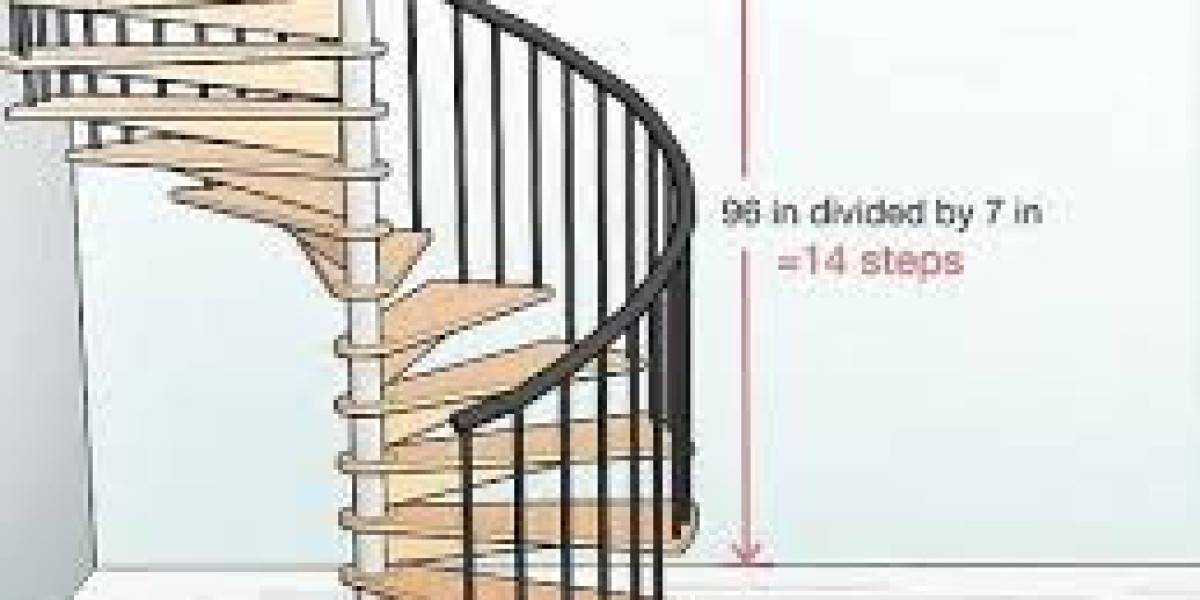Spiral staircases have long been a popular choice for their space-saving design and aesthetic appeal. However, there comes a time when homeowners may need to replace their spiral staircase with standard stairs. Whether it's due to safety concerns, a desire for more functionality, or simply a change in design preferences, replacing a spiral staircase can breathe new life into a space.
Advantages of Standard Stairs over Spiral Stairs
While spiral staircases have their charm, standard stairs offer several advantages that make them a preferred choice for many homeowners. Standard stairs provide better accessibility, especially for elderly individuals or those with mobility issues. They also offer more design flexibility and can be customized to suit any aesthetic or space requirements.
Considerations Before Replacing a Spiral Staircase
Before embarking on the journey of replacing a spiral staircase with standard stairs, there are several important considerations to keep in mind.
Structural Assessment
First and foremost, it's essential to assess the structural integrity of the existing space. Consult with a professional contractor or structural engineer to ensure that the area can support standard stairs and any necessary modifications.
Budget Considerations
Replacing a spiral staircase with standard stairs can vary significantly in cost depending on factors such as materials, labor, and any structural changes required. Establishing a budget upfront will help streamline the decision-making process and prevent unexpected expenses.
Design Preferences
Consider the overall design aesthetic of your home and how standard stairs will fit into the existing decor. From traditional wooden stairs to sleek modern designs, there are endless options to choose from to complement your style.
Step-by-Step Guide to Replacing a Spiral Staircase with Standard Stairs
Now, let's dive into the step-by-step process of replacing a spiral staircase with standard stairs.
Measure and Assess the Space
Begin by accurately measuring the space where the new stairs will be installed. Take into account factors such as ceiling height, clearance requirements, and any obstacles that may impact the staircase's placement.
Choose the Type of Standard Stairs
Next, decide on the type of standard stairs that best suits your needs and preferences. Options include straight stairs, L-shaped stairs, U-shaped stairs, and more. Consider factors such as space constraints, traffic flow, and design aesthetics when making your selection.
Demolition of the Existing Spiral Staircase
Carefully dismantle the existing spiral staircase, taking care to remove all components safely and efficiently. Depending on the materials used and the complexity of the installation, this step may require professional assistance.
Installation of the New Stairs
Once the old staircase has been removed, it's time to install the new standard stairs. Follow manufacturer instructions carefully and enlist the help of experienced contractors if necessary to ensure a proper and secure installation.
Finishing Touches
With the new stairs in place, add any finishing touches such as handrails, balusters, and trim to complete the look. Consider incorporating decorative elements that enhance the overall aesthetic of the space while also providing safety and functionality.
Common Challenges and Solutions
Replacing a spiral staircase with standard stairs may present some challenges along the way. From structural issues to design dilemmas, it's essential to be prepared for the unexpected and adapt accordingly. Consulting with professionals and conducting thorough research can help overcome any obstacles that arise.
Maintenance and Care Tips for Standard Stairs
To keep your newly installed standard stairs in optimal condition, regular maintenance is key. Sweep or vacuum the stairs regularly to remove dirt and debris, and promptly address any signs of wear or damage. Consider applying a protective finish to wood stairs to prolong their lifespan and enhance their appearance.
Conclusion
Replacing a spiral staircase with standard stairs is a significant undertaking that can transform the look and feel of your home. By carefully considering your needs, budget, and design preferences, you can create a staircase that not only serves as a functional element but also enhances the overall aesthetic of your space.
Unique FAQs
Can I install standard stairs in place of a spiral staircase myself? While it's possible for experienced DIY enthusiasts to tackle this project, it's generally recommended to enlist the help of professionals, especially for structural modifications and installations.
How long does it take to replace a spiral staircase with standard stairs? The timeline for this project can vary depending on factors such as the complexity of the installation, any necessary structural modifications, and the availability of materials. On average, expect the process to take anywhere from a few days to a couple of weeks.
What are the most common materials used for standard stairs? Common materials for standard stairs include wood, metal, and concrete. Each material offers its own set of benefits and can be customized to suit individual preferences and budget constraints.
Are there building codes and regulations I need to consider when replacing stairs? Yes, building codes and regulations vary by location and may dictate specific requirements for stair dimensions, handrail height, tread depth, and more. It's essential to familiarize yourself with local codes and obtain any necessary permits before beginning the project.
Can I reuse any components from my old spiral staircase when installing standard stairs? In some cases, certain components such as handrails or balusters may be salvageable and reused in the new staircase. However, it's important to assess the condition of these components carefully and ensure they meet safety standards before incorporating them into the new design.


